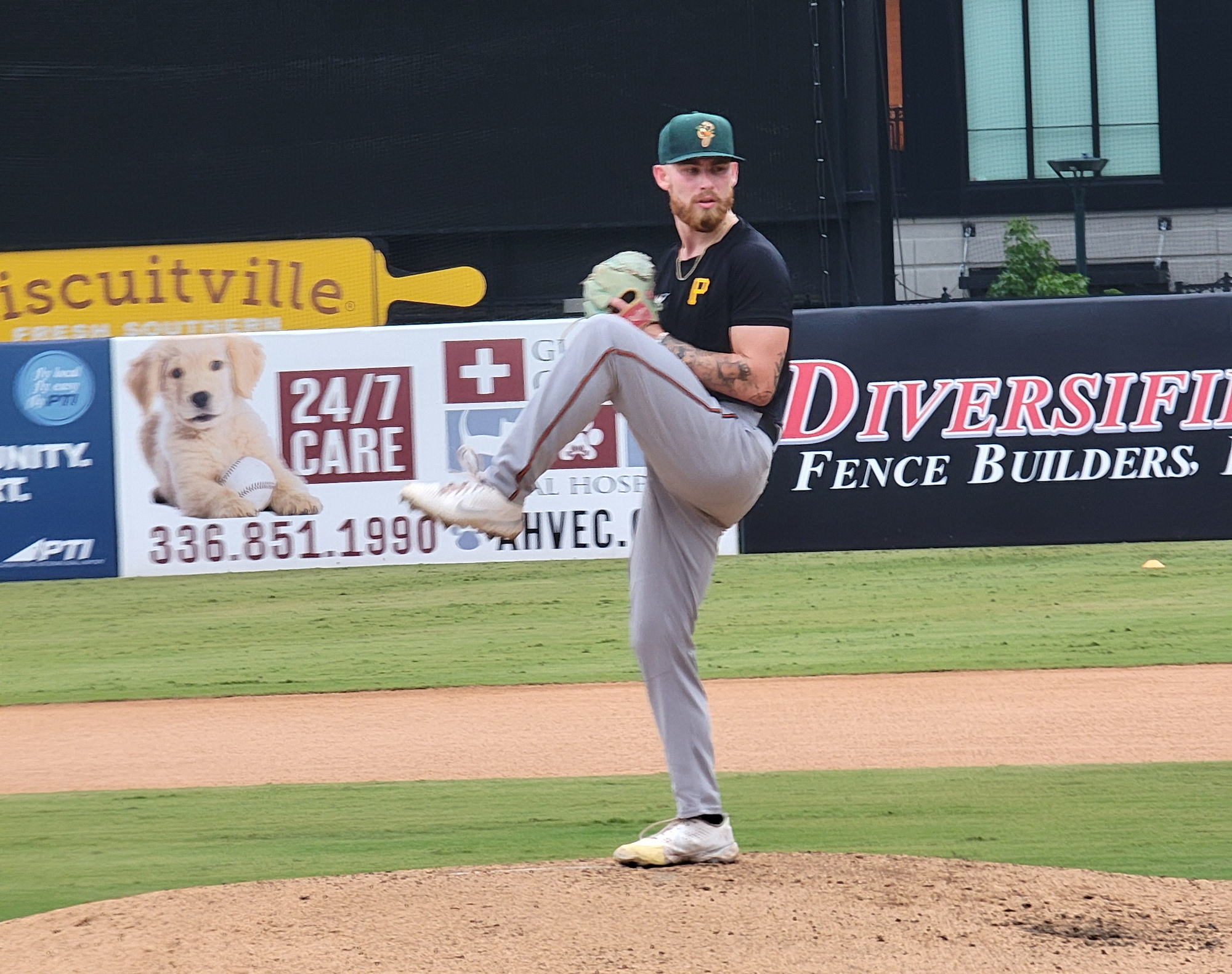Michael Burrows used his lost 2020 season wisely.
The lack of a minor league season allowed him to focus on making improvements to his game that he said he probably wouldn’t have made throughout the course of a regular season.
“I feel like COVID was a huge year for me to really develop and put time and effort into what I’m doing with the baseball, how my body is moving, and it’s just really come together this year,” Burrows said. “I’m glad I had that time to do that last year.”
The results have shown in the stats. Burrows has a 2.25 ERA in 11 starts this year with Greensboro, with 63 strikeouts and 17 walks in 44 innings. He’s currently on the IL with an oblique strain, but threw off the mound on Wednesday in a simulated game.
The success this year has come as Burrows has narrowed his focus on his pitches from five to three.
“Instead of being a jack-of-all-trades and a master of none, I feel like I’ve mastered two really good pitches and a third one that’s really come a long way in the last year,” Burrows said.
The three remaining pitches are a fastball that can get into the mid-90s, a curveball that has been an out pitch, and a changeup. Burrows previously threw a two-seam and worked on a slider.
“I just feel like it was a lot, rather than really breaking down two pitches and working on those. That’s what I did all last year,” Burrows said. “I wanted really badly to have a nice four-seam, and a curveball that played off of it really well. I think I really mastered those two.”
Burrows didn’t throw the changeup as much while he was working on those two, but started adding that during the offseason, and feels “it’s come a long way” throughout this season.
While talking with Burrows, I asked if he had plans to bring back additional pitches in the future. His Greensboro teammate, Carmen Mlodzinski, responded nearby: “He doesn’t need it.”
Burrows is effective with his three-pitch mix, in part due to his extreme spin rates. He is, in the words of Mlodzinski, “The Master of Spin.”
The spin rate is something that has come naturally for Burrows since he signed an over-slot $500,000 deal as an 11th rounder in 2018. Asked what leads to that, Burrows responded simply with a laugh: “Sweat.”
“I don’t know how I do it,” Burrows said. “It’s a huge feel thing. I think moisture is part of getting that grip that you need to have good spin rate, but more-so controlling the feel with it. The spin rate is the aftermath of those other things.”
Burrows discovered his high spin rate the first time he pitched in front of a Rapsodo in pro ball. He now uses the technology to focus on the more important aspect of spin: The direction.
“Spin directions are really big for me,” Burrows said. “My spin rate is always going to be there, but if my spin direction isn’t, then my spin isn’t going to be there. Taking in Rapsodo every other week, and taking in that information and making sure things are still there, that’s really big, rather than going through it blindly like ‘Oh, this feels right, but it might not be right.’”
The progress from Burrows had him jumping up to being the 13th best prospect in the system in our recent top 30 prospects update. He’s also becoming a guy to watch for the future of the Pirates’ rotation.


